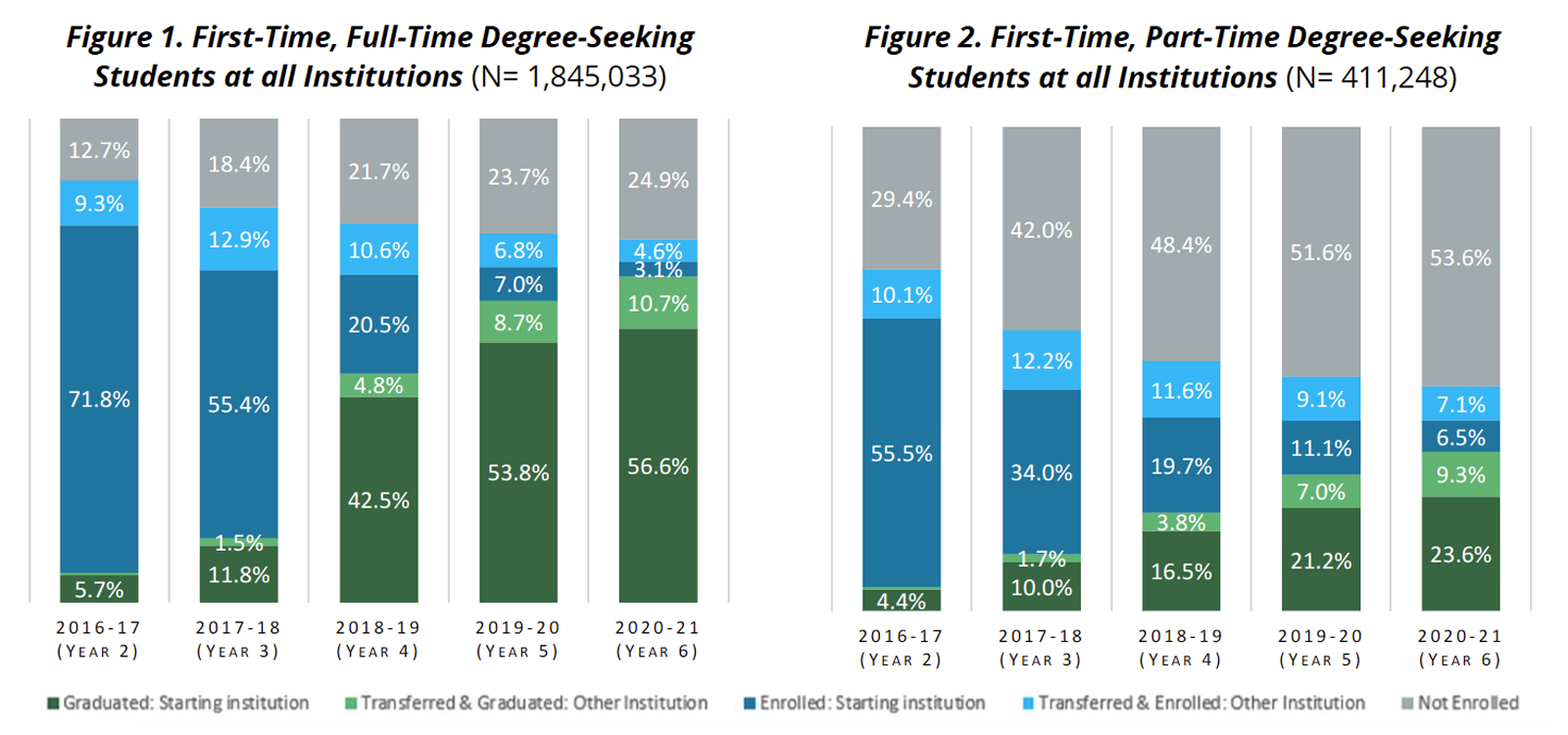- BLOG HOME
- »
- Research Services
- »
- New Report Suggests Higher Ed Should Focus on Early Interventions to Prevent Stop-Out

New Report Suggests Higher Ed Should Focus on Early Interventions to Prevent Stop-Out
In the fall 2015 beginning postsecondary student cohort, enrolling part time was a significant disadvantage for retention, persistence, and degree attainment, according to the Yearly Success and Progress Rates: Fall 2015 Beginning Postsecondary Student Cohort report. In each subsequent year after entry, part-time students were more than twice as likely to stop out, while full-time students were more than twice as likely to earn credentials by year six.
Among first-time degree-seeking students enrolling full time in fall 2015, 47.3% had completed a postsecondary credential by the end of year four, while 21.7% were no longer enrolled. By the end of year six, 67.4% had graduated, including 10.7% who did so after transferring to another institution, while 24.9% had left college without earning a credential and 7.7% remained enrolled (Figure 1).
For students entering part time, 20.3% had completed a postsecondary credential by the end of year four, while 48.4% were no longer enrolled. By the end of year six, 32.9% had graduated — 23.6% from the starting institution and 9.3% from elsewhere — while 53.6% had left college without earning a credential (Figure 2).
Approximately 2.3 million students entered college for the first time in fall 2015 and 680,000 or nearly 30% left without earning any credentials within six years.
The Yearly Success and Progress Rates: Fall 2015 Beginning Postsecondary Student Cohort report goes beyond traditional student outcome measures by showing year-by-year rates of retention, persistence, transfer, completion, and stop-out. It is designed to help institutions and states better identify and inform effective intervention points to increase student success.

Additional Resources:



